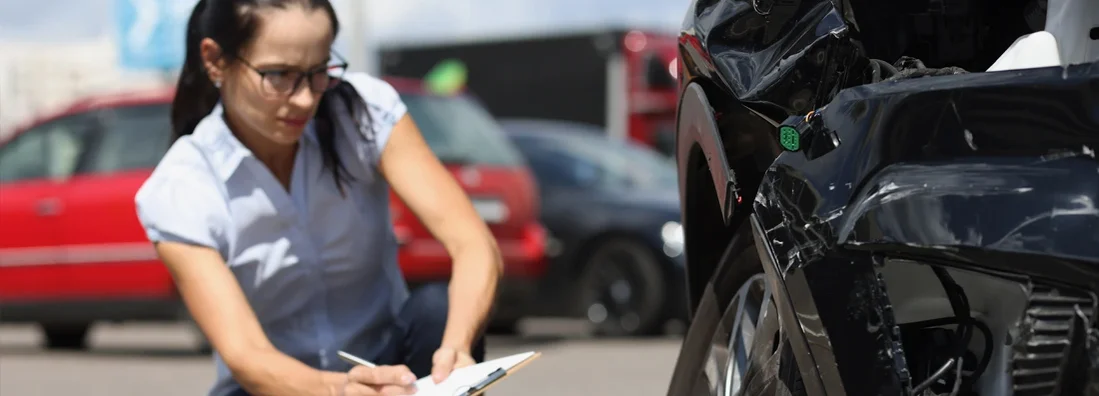Everything You Need to Know about CPI Insurance

Jeff Green has held a variety of sales and management roles at life insurance companies, Wall street firms, and distribution organizations over his 40-year career. He was previously Finra 7,24,66 registered and held life insurance licenses in multiple states. He is a graduate of Stony Brook University.

Buying a new car with an auto loan? Make sure you read the fine print. Many lenders require borrowers to carry robust car insurance on their financed vehicles as a form of financial protection, and failure to do so could lead to the lender adding collateral protection insurance (CPI) to your loan costs.
CPI is purchased by your lender to protect your vehicle, but you’re responsible for its costs. In this article, find out how this works, why it happens, and how to get CPI removed from your auto loan.
What Is Collateral Protection Insurance (CPI)?
Collateral protection insurance is a specialized policy that lenders can add to loans when borrowers fail to adequately insure their financed assets, like vehicles. In the event of damage or loss to the asset, CPI covers the outstanding loan balance, protecting the lender from financial loss.
CPI is also known as lender-placed, force-placed, lien protection, or loan protection insurance. Lenders most commonly add CPI to auto loans if you can’t provide proof of car insurance within a reasonable timeframe, if you purchase inadequate coverage, or if you allow your coverage to lapse.
How Does Collateral Protection Insurance Work?
When you secure financing for your vehicle, you sign a contract that states you’ll abide by the terms of the loan. Often, lenders include a clause that requires you to buy and maintain a certain level of car insurance. The contract should describe the minimum coverage needed, including policy type and limits.
Many lenders use insurance tracking services to monitor the coverage on financed vehicles. If their information shows that your proof of insurance was invalid, or that your coverage has lapsed or fallen below acceptable limits, they can add collateral protection insurance to your loan.
If collateral protection insurance is added to your loan, your monthly payment will increase to cover the costs of its premiums. Lenders typically try to contact you before adding force-placed insurance to your loan, and the CPI can’t provide more coverage than your loan contract requires.
What Does Collateral Protection Insurance Cover?
So, what, exactly, does CPI cover? To offer well-rounded protection for lenders, collateral protection insurance typically includes collision and comprehensive insurance.
Comprehensive insurance can cover:
- Theft: If someone breaks into your car, comprehensive coverage can help pay for repairs and stolen part replacements. Personal belongings that were in the vehicle may not be covered.
- Riots and vandalism: Damage done to your car by vandals or during a riot, like cut tires or broken windows, is usually covered.
- Fires: Wildfires, arson, and accidental fires should be covered by comprehensive insurance up to policy limits.
- Falling objects and projectiles: If a tree limb, rock, or other projectile damages the vehicle, comprehensive insurance can help cover repair costs.
- Animals: This coverage also includes damage caused by animals, such as mice chewing wires or an impact with a deer.
- Weather: Comprehensive insurance coverage can also help pay for lightning, flood, and tornado damage.
Collision insurance can cover:
- Collisions with vehicles and objects: As the name suggests, collision insurance should help cover damage caused by hitting another object, like a tree, guardrail, building, or another vehicle.
- Rollovers: If you roll your vehicle, this coverage can also help pay for repairs, like new windows or body work.
- Potholes: Even damage to your alignment, wheels, and tires caused by hitting potholes can be covered by collision insurance.
How Much Does CPI Cost?
The cost of collateral protection insurance is based solely on the amount of money you borrowed to purchase your car, not your credit standing or driving history. Because of this, CPI typically costs more than if you bought a standard car insurance policy for yourself.
Backpay should also be considered when analyzing CPI costs. If you had a gap in insurance coverage, you could owe a CPI premium for each month your vehicle wasn’t adequately covered.
For example, say your car insurance lapsed at the end of January, and CPI coverage with a $300 premium was added to your loan in April. To avoid gaps in coverage, the CPI policy might be backdated to February, so you would owe $600 in CPI premiums for February and March (plus the $300 for April).
Is Force-Placed Car Insurance Legal?
The financing contract you signed with your lender is a legally binding document. If you don’t abide by the conditions of the contract, like car insurance requirements, the lender has the legal right to protect themselves with measures like collateral protection insurance.
In these situations, CPI is a compromise that works with the needs of both parties. The lender has financial protection, and you’re able to keep the vehicle. However, if you can’t pay the CPI premiums, the lender can repossess your car.
Lenders can’t add CPI to your loan if you’ve maintained adequate car insurance. They also can’t add coverage above the minimum amount required in the contract.
How Can I Get Rid of CPI Auto Insurance?
If CPI coverage is added to your loan, the only way to have it removed is to purchase a car insurance policy that meets your lender’s requirements. Once you’ve done that, just provide proof of insurance to your lender. They should remove the force-placed insurance after verifying your coverage.
How To Get a Refund for CPI Insurance
What happens if your lender places CPI on your loan when you’ve had appropriate coverage the whole time?
Sometimes, mistakes can lead your lender to believe you aren’t properly covered. If this happens and CPI is added to your loan, contact your lender as soon as possible and explain the situation. As long as you can prove you’ve had adequate coverage the entire time, the CPI should be removed.
If you paid premiums for the insurance when it wasn’t needed, your lender should issue a CPI refund within a reasonable timeframe.
FAQs about Collateral Protection Insurance (CPI)
If you can’t (or don’t) purchase and maintain car insurance that meets your lender’s requirements, then collateral protection insurance is likely to be forcibly added to your loan.
While this reduces the lender’s risk, it doesn’t reduce yours. Your best option is to obtain a car insurance policy that meets your needs and aligns with your loan requirements.
Keeping your car adequately insured for the life of your auto loan should prevent the need for CPI.
Your lender will usually give you a call before adding CPI to your loan. You’ll also notice an increase in your monthly loan payments. If it’s still unclear, you can always contact your lender to ask.
CPI can help pay your car loan’s outstanding balance if the vehicle is totaled or stolen.
https://www.thezebra.com/auto-insurance/insurance-guide/collateral-protection/
https://www.iii.org/article/what-is-covered-by-collision-and-comprehensive-auto-insurance
https://www.iii.org/article/auto-insurance-basics-understanding-your-coverage
